18+ Sample Demolition Scope of Work
-

Demolition Scope of Work Template
download now -
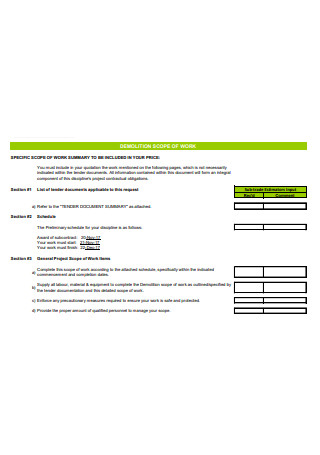
Basic Demolition Scope of Work
download now -
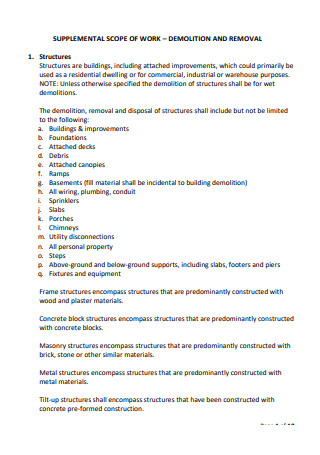
Demolition and Removal Scope of Work
download now -
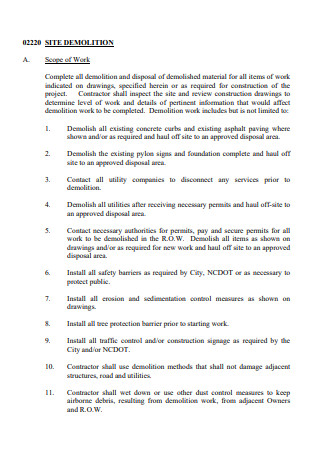
Site Demolition Scope of Work
download now -
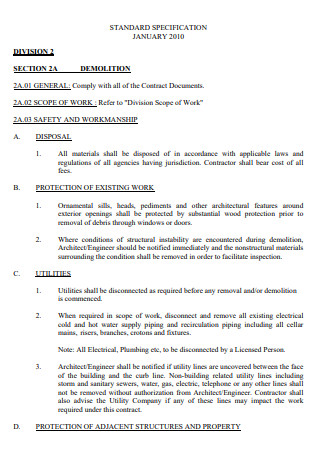
Standard Demolition Scope of Work
download now -
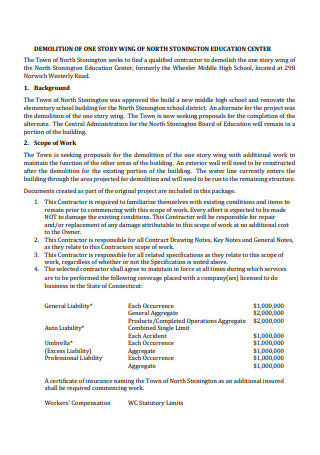
Demolition Scope of Work Example
download now -
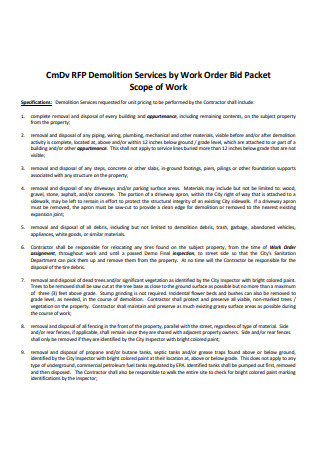
Demolition Services Scope of Work
download now -
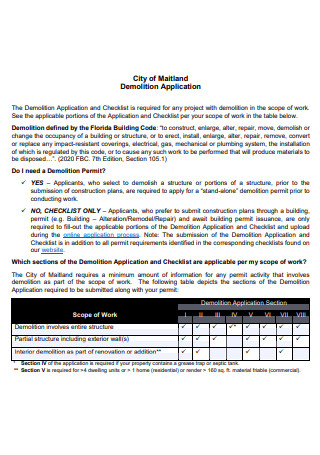
Demolition Application Scope of Work
download now -
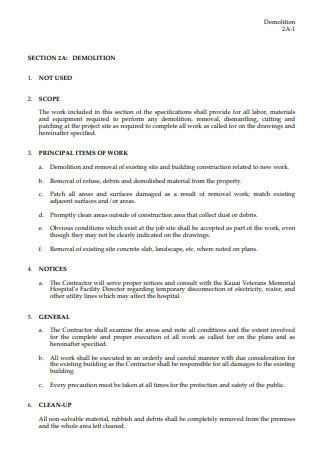
Demolition Scope of Work in PDF
download now -

Demolition and Removal Boiler Scope of Work
download now -
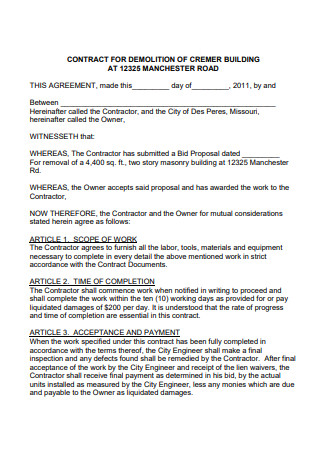
Demolition Contract Scope of Work
download now -
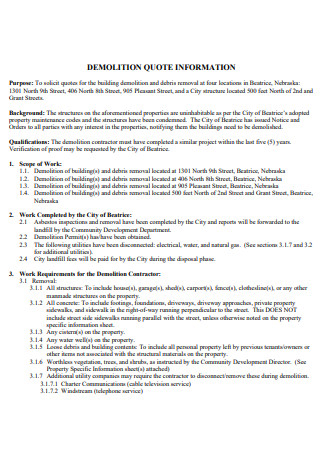
Demolition Quote Scope of Work
download now -
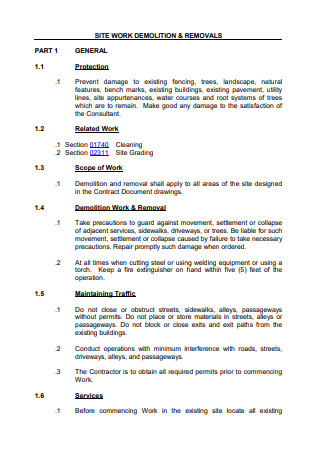
Site Work Demolition and Removals Scope of Work
download now -
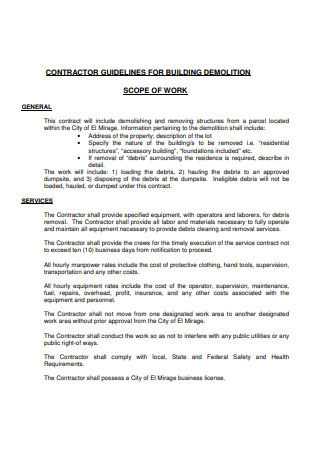
Building Demolition Scope of Work
download now -
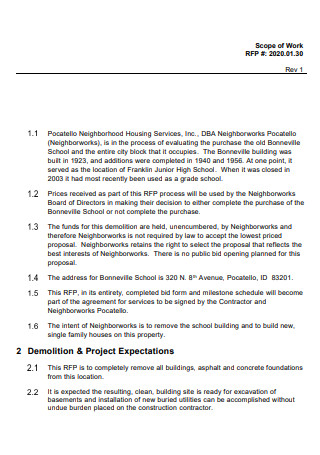
School Demolition Scope of Work
download now -
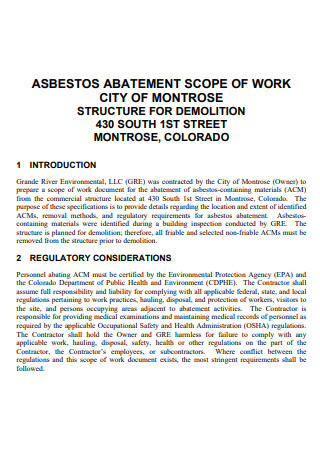
Printable Demolition Scope of Work
download now -
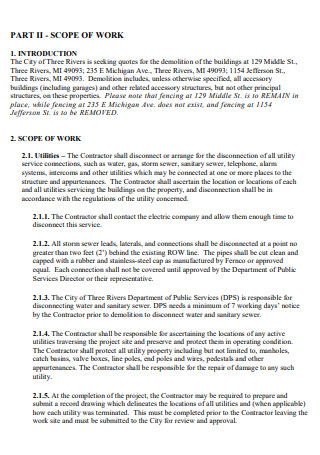
Formal Demolition Scope of Work
download now -
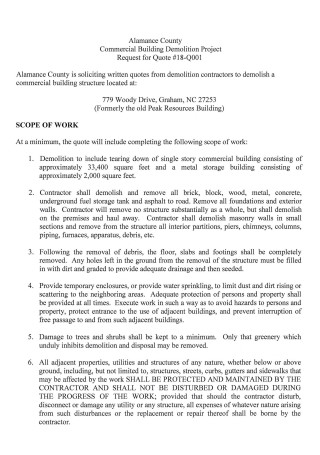
Commercial Building Demolition Project Scope of Work
download now -
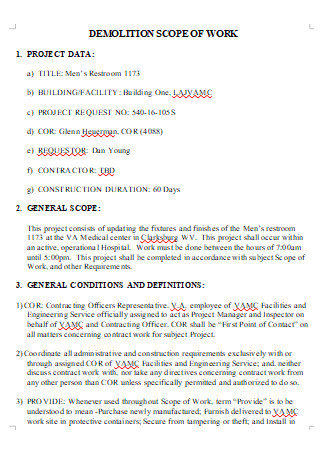
Demolition Scope of Work in DOC
download now
FREE Demolition Scope of Work s to Download
18+ Sample Demolition Scope of Work
What is Demolition?
What is a Demolition Scope of Work?
What is the Planning Process of Demolition?
What are the Various Demolition Methods and Types?
What are the Various Types of Equipment Used During Demolition?
Issues Commonly Faced During a Demolition Process
Step by Step Guide in Writing a Demolition Scope of Work
FAQs
What Personal Protective Equipment should be worn by a demolition team?
What is the difference between demolition and deconstruction?
Should the scope of work be very long?
What is the difference between a scope of work and a statement of work?
What is Demolition?
The term demolition refers to the science and engineering in safely and effectively tearing down condemned buildings and other tall, artificial structures. For small, simple buildings such as two or three-story houses or offices, the process of demolition is just simple and can be done manually or mechanically. Larger, taller, and more complex buildings often require the use of a wrecking ball or use the building implosion method, which heavily relies on explosives. This method is very reliable, and the collapse of the tall structure usually takes only a few seconds. But a downside to this method is it can usually take weeks or months to prepare a structure for this method.
What is a Demolition Scope of Work?
Let’s define what is a scope of work first. Scope of work is a business document that outlines an area in an agreement where the type of work to be performed and its corresponding tasks are listed. It brings together everything from work details, schedules, terms, and expected outcomes to not only define exactly what needs to be done in a project but also to avoid a “scope creep” – which is tasks ballooning uncontrollably beyond what was planned. Scope of work should also contain milestones, reports, deliverables, and end products that should be provided by the performing party.
A demolition scope of work lists the tasks that need to be done depending on the type of demolition method, the building, and the equipment used. A demolition scope of work is needed to make the process more efficient and it acts as a useful guide to have clear insight on what should be done.
What is the Planning Process of Demolition?
When a particular structure has reached the end of its lifespan, that structure is now unsafe for occupation and is unsafe around neighboring buildings. The building is now usually condemned for demolition. Here is the planning process that goes into a building demolition:
What are the Various Demolition Methods and Types?
The methods used for the demolition process greatly vary depending on the building being demolished, its corresponding surroundings, and the equipment that is needed to perform the actual demolition. Here are some examples of demolition methods:
What are the Various Types of Equipment Used During Demolition?
Multiple types of equipment can be seen in a demolition site. Here are some of them that are used in a non-explosive demolition method.
Issues Commonly Faced During a Demolition Process
A demolition project, no matter how simple or complex the structure to be demolished is, will always require careful planning. During the process, the personnel involved should also exercise a lot of caution, because no matter how prepared they may be, issues could still surface if there are any overlooked processes.
Step by Step Guide in Writing a Demolition Scope of Work
Here are some steps you can follow in order to create an effective demolition scope of work:
1. Write the overview and basic information of the demolition project.
To begin creating the demolition scope of work, first, you should write a simple and comprehensible overview of the project or simply, constructing a scope statement that outlines the entire project. In this step, you can also start to write the basic information about the demolition process such as the building or structure to be torn down, the equipment needed and its respective inspection checklist process, how many personnel are needed, the safety precautions to be observed, and the location of the demolition site.
2. Write the project objectives and goals.
In this step, write what are the objectives and intended goals of the demolition project. This highly depends on the method being used. You can start with the reason why the structure is to be demolished, then follow with the goals. If it is only a partial demolition, ensure that the goal that should be reached is to only remove a portion of the structure. If it’s a dismantling, the goal that should be reached is to carefully tear the structure down and ensure that many components are to be reused.
3. Write the scope of the demolition project.
In this part, write and outline the steps that need to be done in order to accomplish the objectives or goals listed in the previous step. This can be done as a bullet list or a simple questionnaire style. Afterwards, you can break down the scope in a separate paragraph into more specific tasks. This can also be written and broken down into phases. This is done to ensure that every person in the demolition team is in sync with the whole process.
4. Include timelines and milestones.
Including a timeline of the project is necessary to ensure that the major phases of the demolition project’s schedule are properly delineated. The timeline of a demolition scope of work is more than just the start and end dates. This is also a part where you can outline when, where, how, and who will do the tasks in the project. Since a demolition project can be so complex and tedious, milestones can also be added. Having a milestone in the scope of work is a way of monitoring the progress and ensures that it is still on schedule.
5. Include spaces for written reports.
In creating a demolition scope of work, it is also necessary to leave spaces for reports, since this is a task that is performed frequently throughout the project. Types of reports can include status reports, progress reports, and many more. Reports serve as a formal record of the progress of your work, and they also let you know if the project is still on schedule or not.
6. Write exclusions.
Even though what is not written in the demolition scope of work is already outside the scope of work and should not be done, exclusion clauses can still be written in the scope. An exclusion is defined as a description of tasks, items, and actions that are specifically “excluded” in the project scope of work.
FAQs
What Personal Protective Equipment should be worn by a demolition team?
In a demolition operation, the PPE (Personal Protective Equipment) will usually include the following:
- Eye, face, hand, foot, and head protection (such as hard hats)
- Respiratory protection, such as industry-grade face masks
- Hearing protection, such as earmuffs or earplugs
- Personal Fall Arrest Systems, which consist of a body harness, anchorage, and a connector (can be a lanyard, deceleration device, etc.)
- Other protective clothing
What is the difference between demolition and deconstruction?
These two terms may mean similar things but they’re different. Demolition refers to the dismantling, razing, or destroying any part of or a whole building or structure. Deconstruction refers to carefully taking a building apart with the intention of preserving valuable parts of it for eventual reuse.
Should the scope of work be very long?
When writing a scope of work, it is important that it should include all the necessary details of the tasks in the project. However, it is also important that you should not write too much and go overboard with too many unnecessary factors. A very long scope of work will surely take time for the contractor to read and verify, and will inevitably lead to delays in working the project.
What is the difference between a scope of work and a statement of work?
A scope of work is basically written inside the statement of work as it presents the clear and concise process in the accomplishment of the specific smart goals of the project. A statement of work generally contains more comprehensive details about the major goals and objectives of a certain project.
Having an effective and well-written scope of work is valuable to the process of getting the tasks in a project done properly. Have a scope of work also helps to not go overboard and beyond the intended tasks, which can slow down a project slightly or significantly. In a demolition project, having a scope of work keeps every personnel in the project on task and holds them accountable. There may be many tasks in this particular project, but an effective scope of work makes it easier to follow. Examples of a demolition scope of work are present above this article, and it is available to you for reference.
